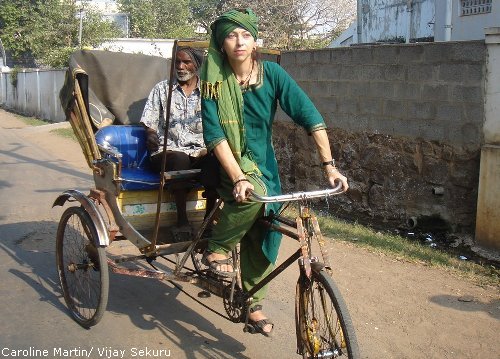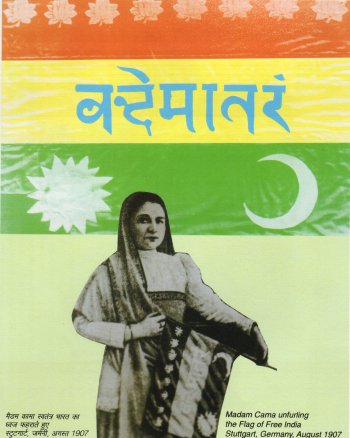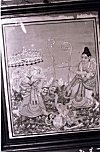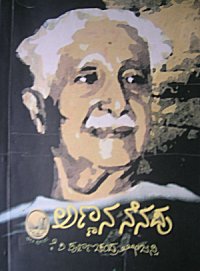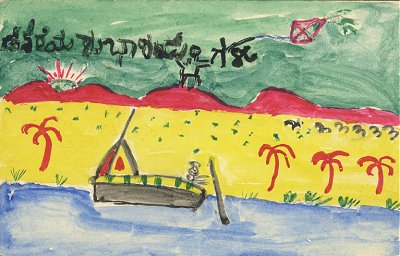|
|
|
Best of AnthoBLOGy • Unripe
Revolution |
Computing, Libraries, Tennis, India & other interests of Vikas Kamat
| India as Photographer's Destination | | ||
| I have started writing a guide for tourists who come to India with particular interest in Photographing India. It includes site ideas, subject ideas, prop. ideas, and safety guidelines. During my research for the article, I was particularly attracted to an album where a visitor reversed roles with locals and took many pictures. I am reproducing one below, and I have captioned it "Role Reversal". Click the picture for a much bigger version.
Quoting from the guide... on photographing India's streets.
For many poor people of India, the streets are indeed their homes and your photographing constitutes invasion -- that is equivalent of a stranger photographing inside of your home or bedroom. As any tourist who has visited India can tell you, it is very common to see people using the streets (or nature) as bathrooms. We have one picture in our collection (for perspective, we have 200,000 photographs), that painfully illustrates this fact. As an editor, I have deliberated a lot before publishing it. But as a photographic subject, for artistic merit, and to document truth, I thought the picture deserved publication. I have captioned it rather strongly. No need to add that it is one of the pictures we get most flames about. You can submit your views via email to me (
| |||
| Dad's Letter to V.B. Nadkarni | | ||
| Exactly 30 years ago today, Bappa wrote a letter to his friend, Prof. V.B. Nadkarni. It is a very painful letter for me to read, yet I find it very insightful and inspirational.
Perhaps you think that the income I derive from writing and photography is an insult to my education or my caliber, but I ask that a man's success in life not be measured in the wealth he builds, or the power he acquires.
See Also:
Dad's Letters as Books Letters written by Bappa are considered as period literature in Kannada langauge, due to their literary merit and lasting value. Two such collections have been published, and very well recieved (both are now out of print). I have translated some of the letters to English and they are in our Letters section.
| |||
| Vande Mataram Centennial | | ||
| "Vande Mataram", perhaps the most famous song from India is 100 years old today.
The song, very poetic in describing the abundance of India, represents a lot of things. It was featured on the first Indian flag unfurled by Madam Cama, and Lala Lajpat Rai ran a newspaper by the same name. Amma (via a private email): In very typical Indian tradition, there is a protest against singing of "Vande Mataram" in schools. Some Muslims are claiming that the song glorifies someone (motherland) other than Allah, and are refusing to sing. The Central Government, who issued a circular to sing the song on the occasion of the centennial, later withdrew it. However most of the Indian Muslims have ignored the protest and participated enthusiastically in the centenary celebrations of "Vande Mataram". Mother India must be smiling over this foolish bickerings!
Yet Another Use of Vande Mataram Personally, I have found beauty in each and every word of the song Vande Mataram, and consider the song is a great source of baby names! Examples of beautiful Indian Names from Vande Mataram: Sujala, Suphala, Sheetal, Shyamala, Shubra, Jyotsna, Pulakita, Yamini, Fulla (Prafulla), Kusuma, Shobhini, Suhasini, Madhur (Madhuri), Sukhada, Varada And all these names, with such beautiful meanings, just from the first stanza! I bow to the genius of Bankim Chandra Chatterji.
| |||
| Memories of Nanjanagudu | | ||
| Memories of Nanjanagudu Amma has gone to Nanjanagudu to attend a history conference, and over the phone she recalled some of the trips to Nanjanagudu she had undertaken when Bappa was alive ... to study the chariot carvings, to study Mysore Traditional paintings and to interview sculptress Subhashini Devi. One of those trips, I was fortunate to accompany Bappa. I think the year was 1984. I am writing this really for several reasons:
Field Trip to Nanjanagudu Nanjanagudu at that time was a very traditional town. Lots of traditional families with treasured art pieces in their homes that they inherited from their ancestors. Bappa wanted to study and photograph them. We took a train to Nanjanagudu from Mysore. Mr. H. Krishnamurthy, a colleague of my mother's had arranged for a local volunteer (Chandru) to help us with introductions. It was very hot and sunny and we got tired hauling all the photography equipment from place to place. We had no appointments and we'd just knock doors and ask if the family had any traditional artwork in their household and if they would permit us to photograph them. Bappa was especially interested in Mysore Traditional Paintings. As you know, Indians worship idols, and in this case they worshipped the paintings. We could not convince most families to move the paintings outdoors so that we could photograph them in the sun. This is the reason why you see a flash reflection in many of the photographs taken. It was a laborious task, but we didn't get any treasure-trove. Everybody
would say so-and-so has a great painting and by the time we went there, either
it was sold, or not available, or we were not allowed to photograph. Finally
somebody said a local gym had some paintings, and we went there. That was the
first time I went to a truly Indian gym (vyayamshala) It was just like
the gyms described in 16th century Indian literature! Traditional wrestlers, and
traditional Indian exercise equipment. I remember it vividly. Then we got hungry, but no restaurant was forthcoming. The young volunteer Chandru insisted
that we go to his house and pay his folks a visit. They were a modest Brahmin family, but
the lady insisted that we eat in their house. To honor her request we did, but we
realized that the lady had fed us the meal she had prepared for her husband and
two children! After we ate, that lady cooked once again, without a bit of regret or hesitation. Her generosity and big heart has always been with me. After all,
we were complete strangers to her, and we offered no money or such rewards. Then someone said the local movie theater has lots of traditional paintings.
So we went there. By looking at our photography equipment many patrons thought
we were a film crew and started following us. The owner of the movie theater was
very courteous and shared with us numerous problems of the theater industry. It was a very tiring day. But I learnt so much!
| |||
| Post Mortem of 2006 US Open | | ||
| Most of my predictions about US Open
came good. So I guess I know a thing or two about the sport.
I was great to see the meeting of Roger Federer and Tiger Woods, most certainly the greatest sportspersons of our time of their respective games along with Michael Jordan. Federer's dominance has been emphatic. The only shot in the sport that has more juice and action than his backhand is his forehand, and he hit twice as many aces than Roddick -- supposedly the greatest server of the same currently. I am also very proud of Leander Paes who won the doubles title (with Martin Damm). There is absolutely no tennis infrastructure in India (my club in Birmingham AL has more tennis courts than whole of Karnataka state.), and I would revere any tennis player from India.
| |||
| Talent Goes (Back) to India | | ||
| My generation of Indians have grown up hearing a phrase Brain-Drain, referring to the exodus of physicians, engineers, and scientists from India in search of opportunties elsewhere. Now, the drain has completely stopped, and the reverse has begun (link to BBC story). Churumuri: Modus Operandi of US Educated Indians Returning to India. True and Funny
New Bird Discovered in India Scientist Ramana Athreya, an astronomer by profession reports in the journal "Indian Birds" about the discovery of new species of bird that he has named after a tribe that lives in the area.
Links to: Abstract and Full-text of the Research Paper (pdf)
| |||
| Review: Annana Nenapu by Tejasvi | | ||
| Annana Nenanpu (Memories of my Dad) by K.P. Purnachandra Tejasvi As I am a big fan of poet-writer Kuvempu, Amma suggested that I read a memoir written by his son Purnachandra Tejaswi, himself a well-known writer of Kannada language. I enjoyed it very much. As admitted by the author, this book is less about Kuvempu, and more about Kannada literary field of 1970s and 1980s, but it provides the background necessary to fully appreciate Kuvempu's greatness as a reformer and an idealist. It also is an exemplary work on how a close relative can write about a great person without getting overly emotional.
Tejasvi takes us to the neighborhood of Vanivilaspuram in Mysore where he grows up surrounded with dogs, water-buffaloes, beggars, and perfume vendors. He is very entertaining. He describes his efforts to learn music, photography, English language, philosophy, and literary aesthetics in the company of his great father, and the disasters he causes. I admire Tejasvi's sound reasoning, his position on India's holymen, and his comments on Indian philosophies. I especially connected with him when he says "My father believed in reform and reconstruction of Indian society, but I did not". I really liked the way Tejaswi has disseminated some of the delicate aspects of Indian culture; the violence on their house by student mobs, the attitude of a Muslim acquaintance on India's independence day, and the description of the vessel shiner (kalaigar, see Vessel Shiners), are some narrations that stand out in my mind. Tejasvi's anti-brahmin stance was known to me since his Lankesh Patrike days, and as a reader, I tried to find the reasons for his anger in the book, which I could not. Overall, an excellent book, both in content and in literary style. It is a piece of present day literary and academic history of Karnataka, as it covers university campuses, caste politics and literary politics. I recommend this book to anyone who can read Kannada. Annana Nenapu
See Also:
| |||
| Wikipedia, the New Frontier for Regionalism | | ||
| I didn't realize that when Bappa wrote Friendship of Goa and Karnataka and that Konkani is a Different Language than Marathi, he was making his allegiance known in the Kannada Vs Marathi fight. Anyway, that's the feeling I get when I watch the brewing of arguments in the Editorial Discussions on Rashtrakutas on Wikipedia. I guess the fanatics have found a new platform to carry on their agenda, Wikipedia.
See Also:
| |||
| Was 1857 Riots a Jihad? | | ||
| Holes in William Dalrymple Interview BBC: Indian Mutiny of 1857 was really a Jihad William Dalrymple, a supposedly "acclaimed writer and historian" (I had never heard of his name) claims that the 1857 riots against the British was in fact, an effort to "preserve the religions" of India. I say that this is just a publicity stunt to get publicity for his forthcoming book, because calling 1857 Mutiny as a "Jihad" is wrong and misleading.
Amma: Col. Mark Wilkes (1760-1831 C.E.) led an extraordinary life on two different parts of the world. He saw the demise of Tipu Sultan in India, and Napoleon in St. Helena.
| |||
| Rama's Mistake | | ||
| Why did Rama, the epitome of moral conduct, and a brave warrior, hide behind
the trees and kill Vali, whom he had never met before, and who had done him no
harm? © K. L. Kamat
Rama, the hero of Indian epic Ramayana is often described as the "Perfect Man". "Possessing strength, aware of his responsibility and obligations,
truthful in an absolute way, firm in execution of his words, compassionate,
learned, attractive, powerful, free from anger and envy, but terror-striking
when roused". The story of Ramayana is full of incidents and events depicting Rama's character. But today I want to point out an episode when Rama's judgment is questionable. Rama seems to have acted "out of partiality, half-knowledge, and haste, and shot and killed, a creature who had done him no harm, not even seen him"[1]. I am talking about the story of Vali and Sugreeva. This is one of the most controversial topics of Ramayana (along with Sita's Trial by Fire, and Abandonment of his twins; more on Rama's Character Flaws in a future entry). Brothers Vali and Sugreeva are caught in a domestic dispute, one of which is the heart of a woman. Sugreeva persuades Rama to take sides with him and eliminate his brother. Rama agrees, his judgment weakened by his enormous grief (of kidnapping of his own wife). It is said that Vali's wife foresaw a conspiracy between Sugreeva and Rama, and Vali is said to have assured her -- "Why would a virtuous man like Rama conspire against me?! All I have done is fight evils and protect the righteous[2] in my life." I believe that Rama could have found an amicable solution to the brother's dispute, and the inclusion of Vali would certainly have stengthened his own fight against Rawana. But we see that Rama values loyalty, and a promise to a friend, much more than the need to be fair or just. Definitely something to ponder, at a time of crisis... Notes:
See Also:
| |||
| Tippu and Kannada | | ||
| Tippu and Kannada (from a conversation with Amma) Amma: Have you heard about the new controversy about Tippu and Kannada? It has now turned into Hindu Vs Muslim fight, with political ramifications. Vikas: Yes, I think the comment by the minister for education was uncalled for. Leaders especially have to be careful not to scratch on old wounds, lest how will they heal? Amma: An editorial person from Deccan Herald called and wanted my opinion on the matter. When I declined, he was persistent and kept asking me "Is it true or not that Tippu favored Persian over Kannada ?" I explained to him that I do not want part of the controversy, and my interest is only academic. Vikas: You did a good thing Amma. You don't know how much of angry email we get about Bappa's 1999 article on Tippu Sultan in spite of an editorial disclaimer at the beginning of the article. No matter what you said, the press would have misquoted you and dragged you into controversy. See how they have dragged Girish Karnad, although he is a fiction writer! Amma: But what angered me was the reporter's insistence to quote me. He goes "So, do you know or do not know about Tipu's governance in Kannada?" I told him rudely -- "I know, but I am not going to tell you." and I let him go. Vikas: He should know not to bother you Amma. Didn't the Islamic fundamentalists burn Deccan Herald offices for what they thought was anti-Islamic article? Amma: I'm glad you remember. It was an award winning short story called "Mohammed the Idiot", a piece of fiction around a character called Mohammed. It is such a common name in India! Our leaders are champions of stirring up communal trouble, and they said it is insulting to the Prophet. No matter what opinion I gave, it is bound to offend one of the stances of the controversy. It is best to stay neutral. When your Bappa died, we were in too deep a shock to
notice it, but a communal conflict started in Gujarat whose after-effects we are still seeing. This current controversy is just a continuation of that ill-will.
| |||
| Misc. Stuff | | ||
| Today's Bappa's birthday. He would have been 72. The New English School in Honavar, where Bappa studied (and I did as well) is conducting a "Kamat Day". They also conducted an exhibition last month during the Ganapati Festival (see Report in Udayavani Newspaper). The library that Amma built in Honavar might finally start this year (we've had all kinds of problems from mischief-mongers).
Link Suggestions Aperture Photo Blog: Pictures of Old Mysore Dasara -- Relive the old glory in these paintings. Deccan Heard: Practising Gandhism in my own way by Vinut Hiremath. "You should become the change you want to see in the world"
My greetings to all readers of this blog, and the advertisers who support Kamat's Potpourri. Here's a Dasara Greeting I'd made when I was six.. © Vikas Kamat
I have opened a new set of tools for our advertisers. It contains all the inventory of pages, their ranks, and CPR (Cumulative PageRank) of content folders. Lots of tools to plan a campaign. Please register as an Advertiser in Kamat Network to gain access. (Registration is free).
Via a Reader's Tip: Today's Vijayakarnataka newspaper has a column about Bappa on Page 7. Nice If you can read Kannada, the Vijayakarnataka has an excellent essay by S.L. Bhyrappa on the Tippu-Kannada controversy. It is full of facts, and includes an attack on Girish Karnad. It is on the Sept 24th issue.
| |||
About Me:
- My Home Page
-
Contact me

- Kamat Family Album
| Powered NOT by Blogger or MovabaleType or
WordPress, but by SimplyBlog, a software I wrote to
create blogs. See details of implementation or download SimplyBlog. |
| News |
|
BBC News Google News Kamat News NewsLogic |
| Blogs |
|
Amma Indian Blogs AutoBlog Blog Network |
| @Kamat.com |
| What's
New What's Old |
| Frequent Visits |
| Dave Winer Birmingham Local Atlanta Tennis |
| This is how I surf the web. Turns out creating your own start page beats all portals, back-flipping, personalized corporate pages, and book-marking tools. |

